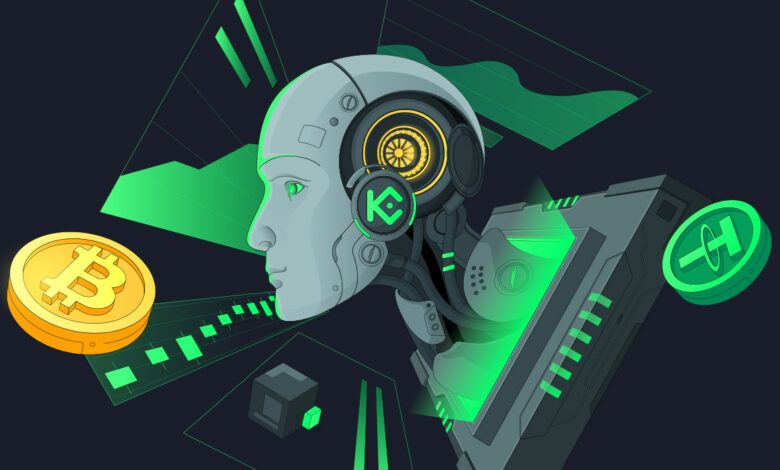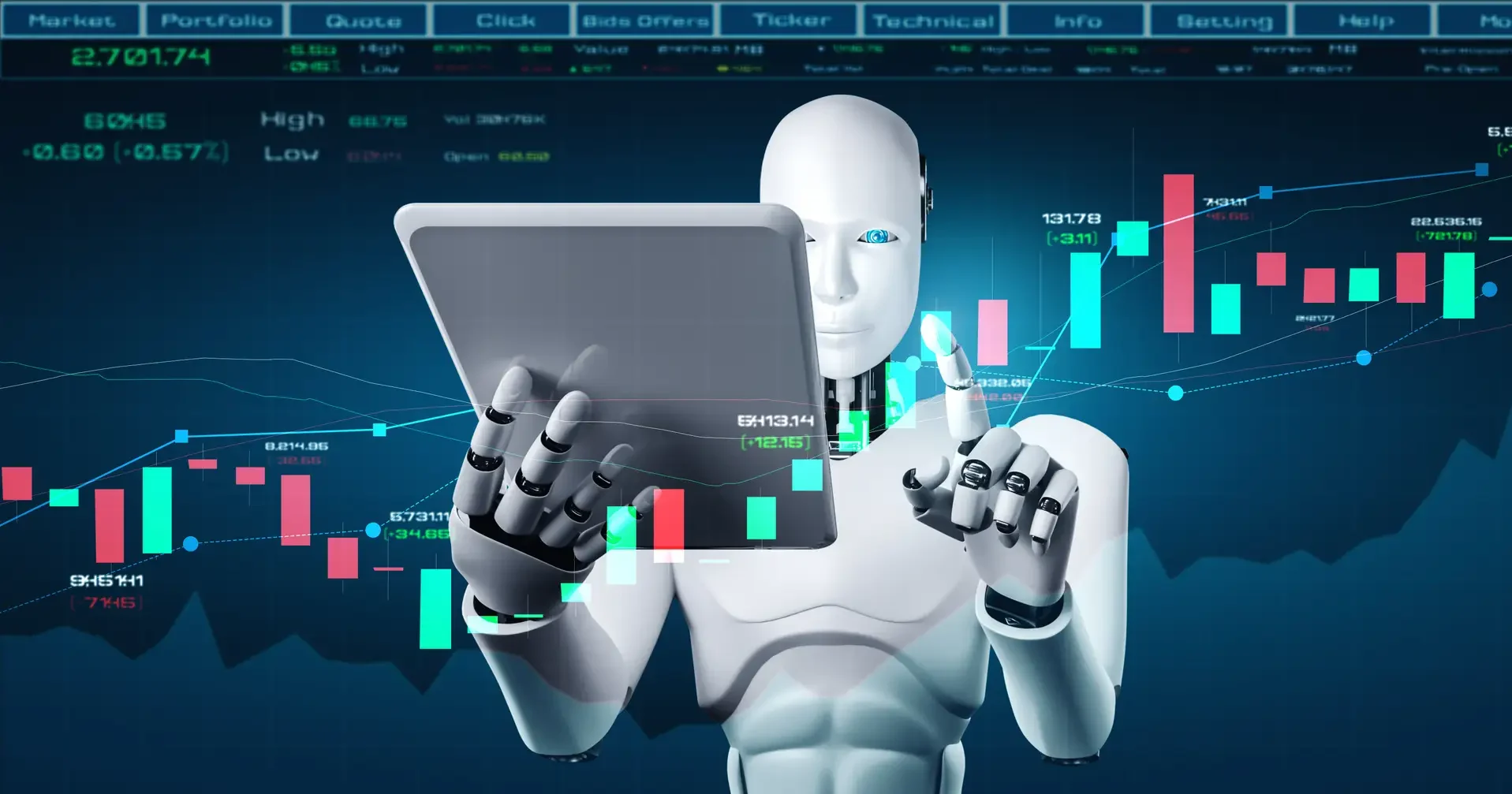AI-Powered Crypto Trading Bots, Are They Worth the Investment?

AI-powered crypto trading bots have become invaluable instruments in the world of digital finance, which is constantly evolving. They claim they can trade on the market automatically, make fair decisions, and work continuously. These smart trade systems can make choices faster than a person could because they utilize machine learning, algorithmic techniques, sentiment analysis, and the processing of massive volumes of data. But amidst all the excitement, a simple question remains: are Best AI Crypto Coins, bots truly worth the investment? This session will cover the sophistication of these alternatives, their merits and drawbacks, and whether they live up to the hype.
How is AI starting to trade cryptocurrency?
A.I. has revolutionised practically every element of the financial sector, including equities, bonds, swaps, and now crypto. BlackRock and Vanguard are two well-known companies that are experimenting with AI-based strategies, and an increasing number of institutions are backing artificial intelligence-driven portfolios. Cryptohopper, 3Commas, Coinrule, and Pionex are several cryptocurrency firms that are receiving greater attention for developing unique AI trading bots. These platforms address the challenges of crypto markets being always open, experiencing significant volatility, and utilising decentralised exchanges by offering automated execution, sentiment-based indicators, and risk hedging.
AI bots frequently analyse streams of market data, utilise technical indicators, and sometimes employ natural language processing to gauge public sentiment on social media and in the news. This allows them to quickly spot trends, trade, and rebalance accounts. Many platforms offer backtesting, which enables users to try out approaches on previous data. This is a wonderful way to get better before putting actual money on the line.
How Do AI Bots Work?
Bots that trade using AI combine rule-based automation with intelligent behavior that adapts over time. The rule sets provide a uniform framework, and AI analysis adapts to the market to make real-time predictions. Bots that are just based on algorithms are very different from bots that are powered by AI: Normal bots always perform what they’re told, while AI-powered bots can change how they work based on the situation. Experts now advocate for hybrid systems that preserve existing regulations while incorporating AI understanding.
These systems also have tools for managing portfolios, minimising risk, assessing sentiment, and generating profits by trading between exchanges. Bots can identify price disparities between Binance and Coinbase, execute trades, and then send the profits back. They also utilise NLP to monitor how people feel on sites like Twitter and Reddit. This helps them find trends before they happen in the market.
Bots with AI have these benefits
These strategies have several advantages. You don’t have to worry about fear, greed, or FOMO when you trade automatically. AI bots are always watching and acting on things, so no chance is missed, even when purchasers are sleeping. These bots can analyze vast volumes of data from markets, sentiment sources, and on-chain metrics, which is impossible to do manually.

They are also quite strong at backtesting, which involves considering how strategies would have performed in past bull and bear markets. Many platforms are ideal for both beginner and seasoned traders. For instance, platforms for beginners make it easy to set up and provide strategy templates. On the other hand, platforms for experienced traders allow you to modify machine-learning models and create custom signals.
What are the costs, dangers, and constraints?
However, it is essential to remember several key points regarding these perks. Small traders may have a tougher time making money because they have to pay for subscriptions, servers, and premium exchange processing. When there are flash crashes or abrupt political developments that AI lacks sufficient knowledge about, algorithmic bots may not function as effectively.
There are numerous security flaws. For instance, hackers might gain access to API keys and steal money, just as they did in the Harpoons incident. There is additional regulatory risk because automated and decentralised transactions occur in a murky area of the law. Due to algorithmic opacity, or “black box decision-making”, it’s also impossible to understand why a model behaves the way it does.
Thinking about the chance of getting something back
Expectations for how well someone will do should be realistic. Even the most sophisticated AI bots cannot guarantee profits, and when the market is unstable, erroneous model projections can exacerbate losses. The real world reveals how vital it is to handle risk correctly, as returns can fluctuate significantly. Hybrid systems that trade based on rules and AI insights tend to outperform bots that only trade based on rules.
Big corporations are also entering the market and adopting AI to implement large-scale strategies, such as mean reversion, trend following, and market-making. Hedge funds, for instance, utilise algorithms that have been trained on extensive price data and social media posts. This makes AI trading more professional, which means that smaller retail traders may feel more pressure to utilise similar tools or strategies.
How to Choose the Right Bot
The best bot for you will depend on what you want to do, your level of experience, and the resources you have available. Backtesting, compatibility with multiple exchanges, security layers (such as API whitelisting and IP limitations), and clear audit logs are all essential features. Platforms that are well-known for their good performance, rapid customer service, and open teams are safer.
If you are knowledgeable about technology, you may wish to consider acquiring open-source bots like Hummingbot or Pionex. CryptoHero and Coinrule’s drag-and-drop tools may be suitable for individuals who prefer a straightforward approach. Any choice should be based on being open, having a clear price, and respecting the regulations.
Real-World Examples and Results
People who use it report mixed effects. Some people who utilise cryptobots correctly and are disciplined say they earn 10–20% a month during bull markets. Some users, on the other hand, set up their bots wrong and lost money when the market was unstable. Research reveals that market manipulation or adversarial noise can make bots incredibly weak if no one is watching them.
Regulators are also paying heed. The Bank of England in the UK, for instance, has stated that AI-driven trading could exacerbate shocks if no action is taken. This highlights the importance of having a diversified portfolio with effective leadership.
What Will Happen Next
Things are evolving swiftly in the realm of AI and crypto. Bots in the future might leverage decentralised intelligence, flexible risk management, cross-market hedging, and reinforcement learning. Services can collaborate on building on-chain DeFi plan execution and compliance components. Bots designed for businesses may soon enable average consumers to access institutional crypto funds.
Regulators will clarify how these bots can be used lawfully. For example, the anticipated MiCA in Europe and the US SEC rules on algorithmic trading. Crypto Marketplace, Expect API security to improve, risk disclosures to be required, and requirements for model auditability to be established.
